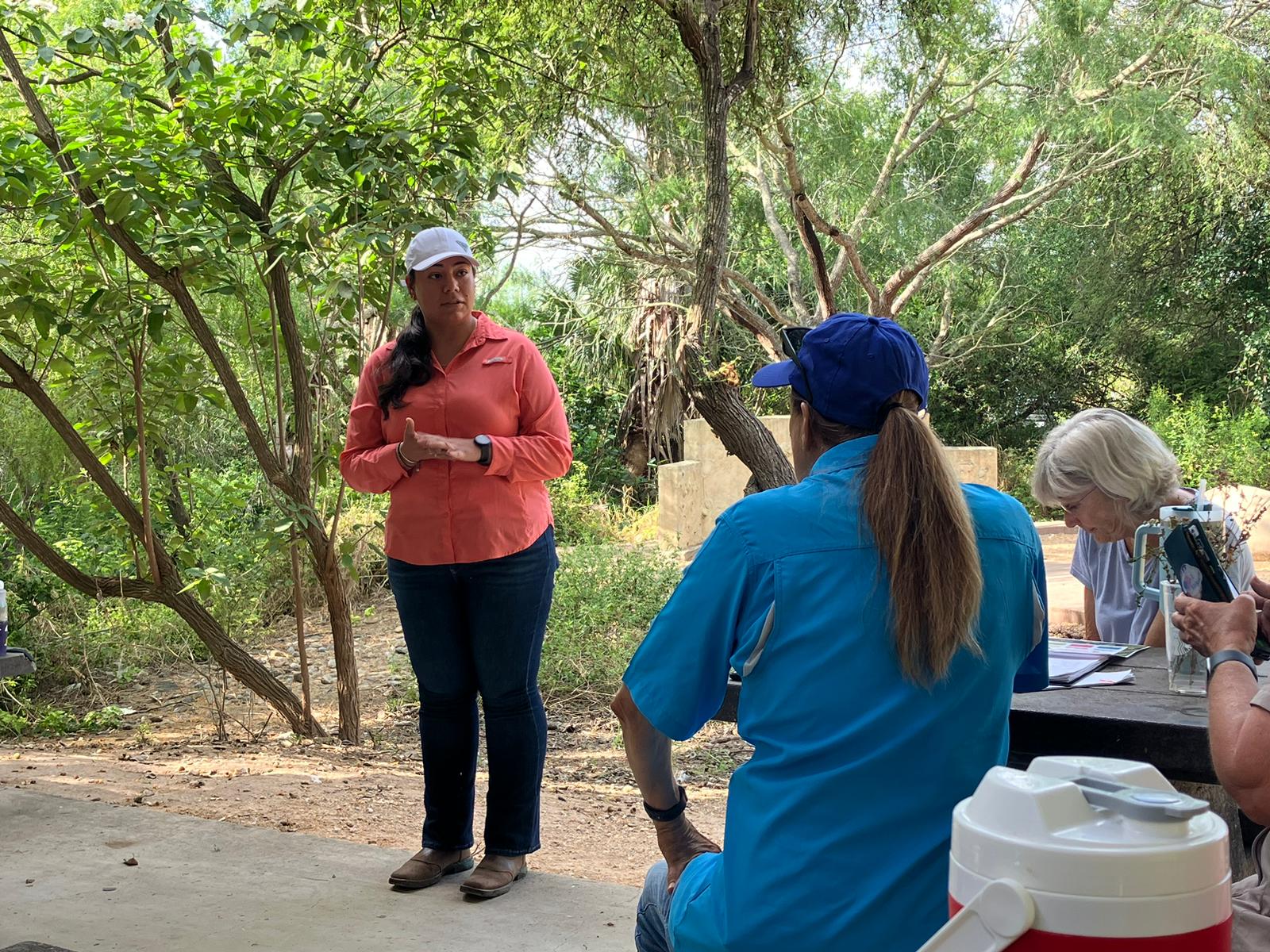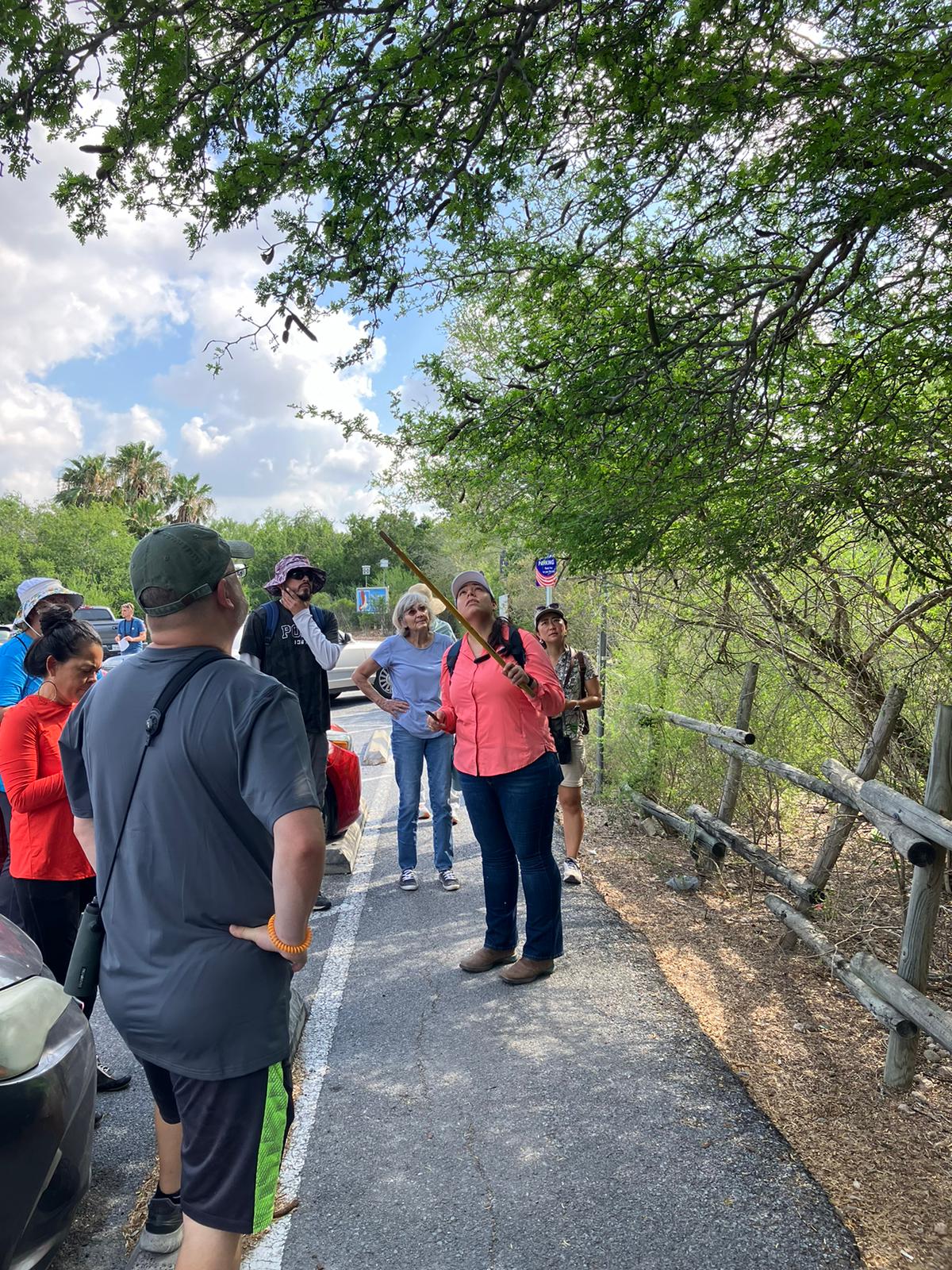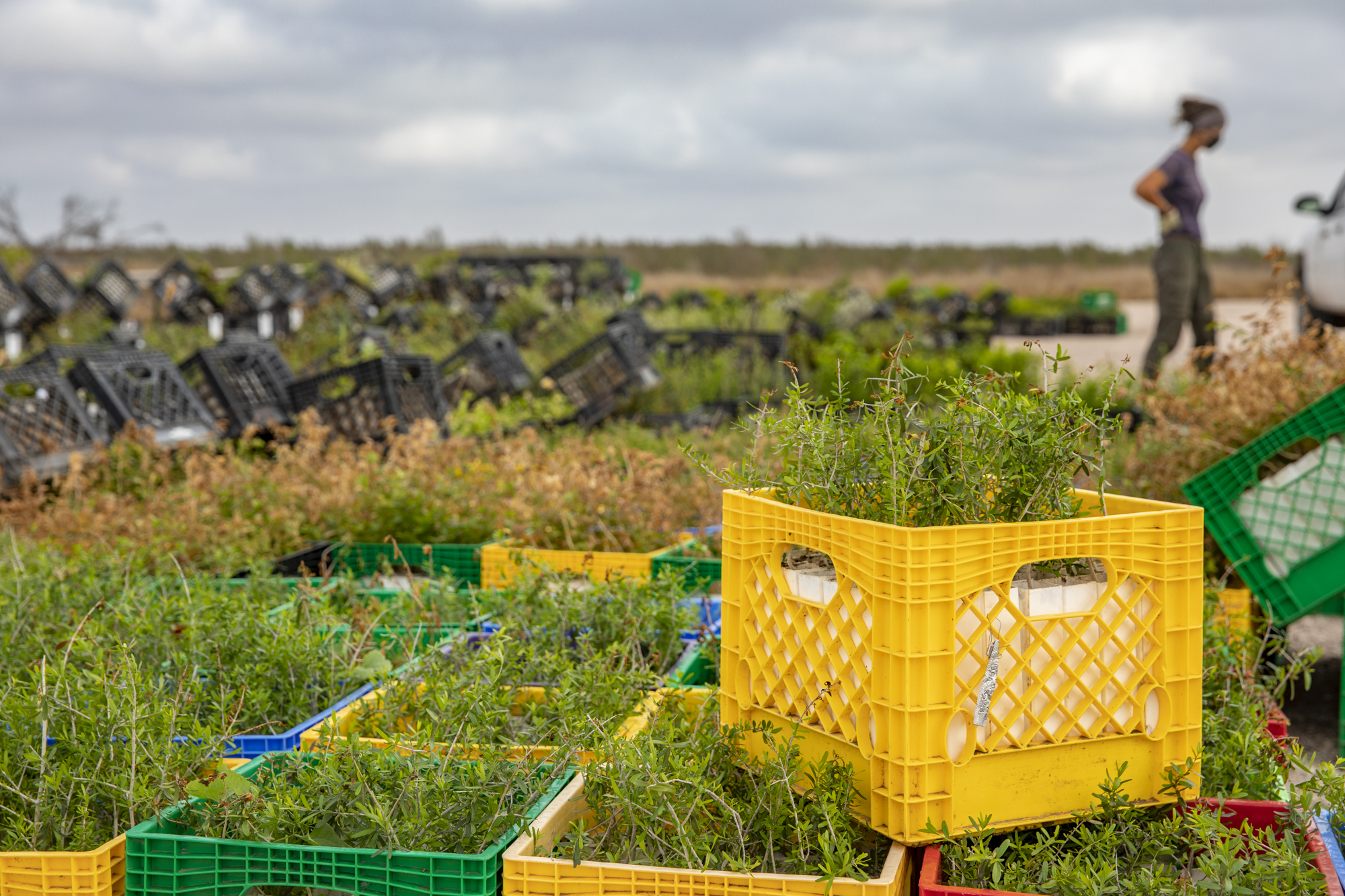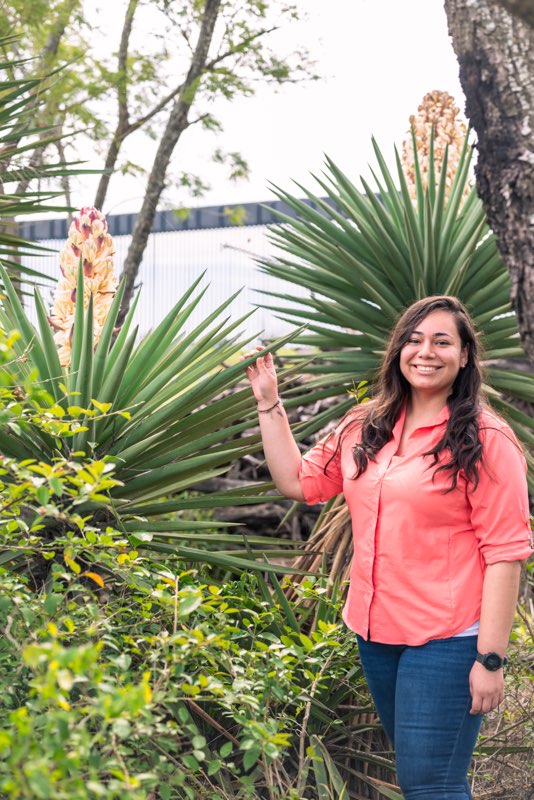By Amanda Alaniz
RIO GRANDE VALLEY, TEXAS – AUG. 8, 2024 – UTRGV alumna Gisel Garza is passionate about environmental conservation and the Rio Grande Valley’s ecosystems, and has found a way to successfully combine her UTRGV education and her personal interests into opportunities.
A native of Los Ebanos and manager of the Semillas Compartidas (Shared Seeds), a seed bank that American Forests runs in the Rio Grande Valley, Garza recently was awarded fellowship to the National Science Foundation Graduate Research Fellowship Program (NSF GRFP).
The NSF program is awarded to students pursuing a graduate degree in science “to help ensure the quality, vitality and diversity of the scientific and engineering workforce of the United States.” The goal is to broaden participation of the full spectrum of diverse talents in science, technology, engineering and mathematics (STEM).
The five-year fellowship is highly competitive and provides three years of financial support, including an annual stipend of $37,000.
“It meant the world to me to be acknowledged as a scientist, especially because the whole basis of my application to NSF was restoring the Valley’s Thornforest ecosystem,” Garza said.
UTRGV SHAPED LIFE’S PATH
The first-generation college student earned a bachelor’s degree in Biology with a minor in Chemistry in 2019, and a master’s degree in Biology from UTRGV in 2021. She said she wanted to pick a major that would allow her to learn more about conservation ecosystems, like the Valley’s thornforest ecosystems, and UTRGV provided those opportunities.
“Toward the end of my junior year, while I was pursuing my bachelor’s degree in Biology, I knew I didn’t want to graduate without doing research,” she said. “When I met Dr. Teresa Patricia Feria Arroyo, I decided it was time to break out of my comfort zone. So, I signed up for her Global Change Ecology Study Abroad course in Mérida, Yucatán, and asked to be part of her research lab.”
Garza became part of the TACFSA – Talent in Agriculture for Climate Change and Food Security Adaptation program – where Feria, professor in the UTRGV School of Integrative Biological and Chemical Sciences, is the lead project director.
Garza said she gained critical skills as a scientist by developing and presenting her research after she joined the program. As a senior and with Feria’s support, she started a club focused on the conservation of the Valley’s native plants, called the Native Plant Conservation Club. After she graduated with a bachelor’s degree, she pursued her Master of Biology, with Feria as her mentor.
Garza’s thesis while at UTRGV and through her graduate degree was focused on an endangered plant only found in the Valley and southeastern Mexico – thornforest.
Thornforests are native to the Rio Grande Valley, but the plants are on the brink of becoming endangered, with less than 10% remaining, according to American Forests.
“Thornforests are among the most biodiverse landscapes in North America, providing habitat to 1,200 plant species, 519 bird species and 300 butterfly species, along with 45 threatened or endangered species, including the ocelot,” according to the American Forests’ initiative for its Thornforest Conservation Plan.
Garza has been actively involved in many of its initiatives and research about saving the thornforests.
“I was able to present my research at regional and national conferences and I published two papers, which really demonstrated to me my growth as a scientist,” she said.
Now, as she continues her education and her research, the NSF fellowship has given her important validation that she is on the right career path.
“I know that I’ve grown significantly from who I was as undergraduate student, too shy to speak to professors but with ambitions of one day doing research,” she said.
Garza, who currently is working on a PhD in Ecology and Conservation Biology at Texas A&M University, says that as she expands her knowledge of conservation and the environment, she hopes to make her research available in English and Spanish to reach as many people as she can.
“I want to provide others like me, who might be shy and following an unknown path as first-generation students, an example that we can pursue what we’re passionate about. And we can do it in a way that highlights our culture and what we value,” she said.
To learn more about ecosystem research at UTRGV, visit Ferialab Biosafety Laboratory.
ABOUT UTRGV
The University of Texas Rio Grande Valley (UTRGV) was created by the Texas Legislature in 2013 as the first major public university of the 21st century in Texas. This transformative initiative provided the opportunity to expand educational opportunities in the Rio Grande Valley, including a new School of Medicine and a School of Podiatry, and made it possible for residents of the region to benefit from the Permanent University Fund – a public endowment contributing support to the University of Texas System and other institutions.
UTRGV has campuses and off-campus research and teaching sites throughout the Rio Grande Valley including Brownsville (formerly The University of Texas at Brownsville campus), Edinburg (formerly The University of Texas-Pan American campus), Harlingen, Weslaco, McAllen, Port Isabel, Rio Grande City and South Padre Island. UTRGV, a comprehensive academic institution, enrolled its first class in the fall of 2015; the School of Medicine welcomed its first class in the summer of 2016, and the School of Podiatric Medicine in the fall of 2022.




